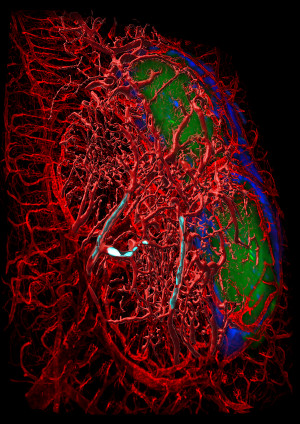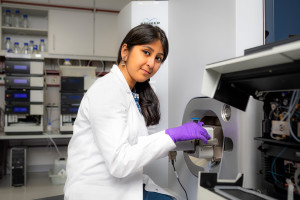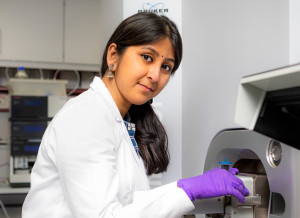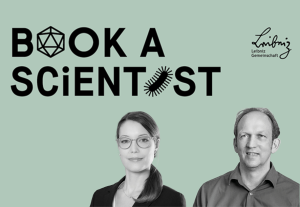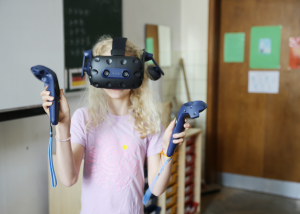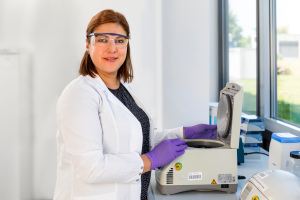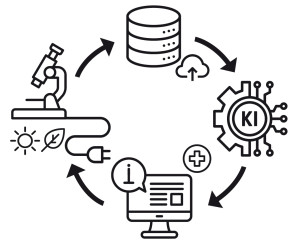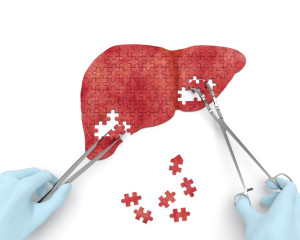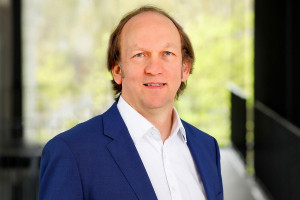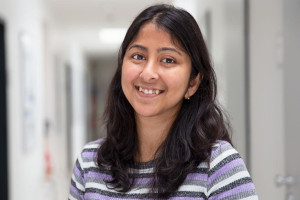In the case of sterile inflammations, such as a stroke or myocardial infarction, massive inflammatory responses are triggered in the body even without direct external action. In order to achieve a better understanding of immune responses to sterile infections in different organ systems, the Biofluorescence research group focuses on identifying the cellular and molecular immune mechanisms underlying their development.
One focus is on the detailed molecular analysis of specific tissue niches encountered by invading immune cells in inflamed organs or in tumors. These are fundamentally different from the environment in, for example, bone marrow, blood or lymphoid organs - the sites where immune cells reside under non-inflammatory conditions. Immune cells respond rapidly and with fundamental changes in their molecular functionality to changes in their environment. These molecular transformations dramatically alter immune cell responses to common stimuli, but are still not fully understood.
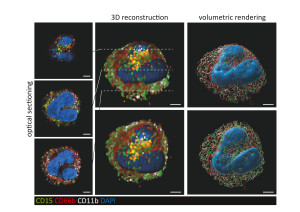
3D reconstruction of a human neutrophil granulocyte captured by confocal laser scanning microscopy.
© ISAS / Matthias Gunzer & Anika Grüneboom
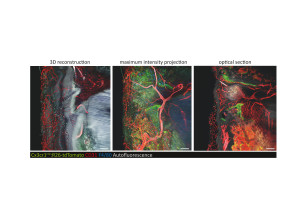
Localisation of the inflammation-induced immigration of macrophages (green) into a murine knee joint under rheumatoid arthritis by using light-sheet fluorescence microscopy. Blood vessels are shown in red and general tissue in grey.
© ISAS / Matthias Gunzer & Anika Grüneboom
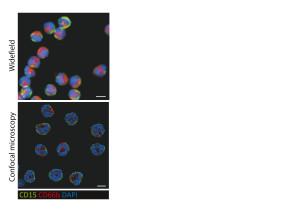
Comparisons of the optical resolution of images of human neutrophil granulocytes by means of confocal laser scanning microscopy and widefield microscopy.
© ISAS / Matthias Gunzer & Anika Grüneboom
To better understand the role of the immune response in sterile inflammation, the researchers induce various disease states in animal models. They then analyse the inflamed tissues and infiltrated immune cells using advanced light and electron microscopy. The tissues are then further molecularly characterized using flow cytometry, mass spectrometry (MS) and MS-based imaging. In translational studies, the scientists investigate the response of human immune cells to similar triggers in vitro. In various collaborations with partners from the University Hospital Essen, the researchers at ISAS also analyse cells from human patients. With the results obtained, they hope to identify potential new therapeutic targets, subsequently verify them experimentally, and ultimately derive new therapy regimens for patients from the results.
